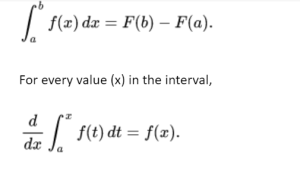Starting from as early as the 5th century B.C, the Greeks were the first culture to have any foundations in Calculus. Throughout history, the baton for the usage of calculus was passed on from the Western world to the Middle East and India. In the 17th century, two of the greatest mathematicians of our time, Sir Isaac Newton and Gottfried Wilhelm Leibniz, formulated the modern concept of calculus and created the different branches of Differential calculus and integral calculus. Today, calculus is applicable to economics. science and even motion studies due to its vast reach and problem-solving capabilities.
Principles of Calculus
There are four different components of calculus that are applicable in the modern world. These four components deal with various degrees of change and deal with continuity, finite and infinite sequences and the calculation of derivatives.
- Limits – A limit is the end value achieved through processing an input value through a function. In other words, when a certain value is set as the input numerical component and is put through a function or a sequence, the resulting value is considered the limit. The set value is considered a limit, then the input value is calculated through the function multiple times until it reaches the set value considered as the output.
In mathematical terms, it is explained as
f(x) is to L, as x is top
Where f(x) is the output, L is the limit and p is the input. And x is the value assigned.
Limits are perceived as one-sided, subsets of limits, deleted and non-deleted limits.
- Infinitesimal – when an object is minutely small, it can be considered as a real number in a given series. For example, in a series of 1, 1.2, 1.3 and such, an infinitesimal is any number less than a positive number. So in a given sense, manipulating infinitesimals can be considered calculus.
The different series which can have infinitesimals is the Laurent series, The Levi-Civita field, Transseries, Surreal numbers, hyperreals and Superreals.
- Differential Calculus – All the applications, properties and definitions of the derivative of a function constitute differential calculus. This process is better known as differentiation. A derivative tends to use a function as an input and following the linear operative system, creates a second function as the ultimate output. For example, if time is an input and the motion of a car is the output, then the derivative is the function of input and tracks the motion of the car to the final function output.
In mathematical terms, this is defined as
![]()
- Integral calculus – In mathematics, an integral allots numbers to functions to depict dislodging, area, volume, and other concepts that emerge by consolidating minuscule data. This method of finding integrals is called integration. Integration is a key, fundamental activity of calculus and serves as an instrument to take care of issues in mathematics and science including the region of an erratic shape, the length of curves, and the capacity of solids, among other functions.
In mathematical terms, Integration uses the ∫ symbol to depict the formula
∫ba f(x) dx
The is another school of thought which treats differentiation and integration as inverse functions of the same study. This is called the fundamental theorem of calculus.
Considering that f is a function, a & b are intervals, and the derivative of f is the function F, then the formula stands as

For every value (x) in the interval,
Calculus is used in practically every branch of applied sciences as it helps us in achieving numerical values of change in different aspects of time, motion and distance. It is relevant in the study of space shuttle launches and fission reaction timings, to name a few.
Conclusion
With calculus, we get the capacity to observe its impacts being explored to change conditions on the function. By considering this, we can figure out how to control the subset of functions to achieve what we want to do. What we believe that it should do. Calculus, by enabling engineers to show and control frameworks, gives them (and possibly us) unprecedented control over the material world.
The improvement of calculus and its applications to physical science and designing is likely the main component in the advancement of current science past where it was in the times of Archimedes. Furthermore, this was liable for the modern transformation and all that has followed from it including practically every one of the significant advances of the most recent couple of hundreds of years
 Profile
Profile Settings
Settings Refer your friends
Refer your friends Sign out
Sign out






